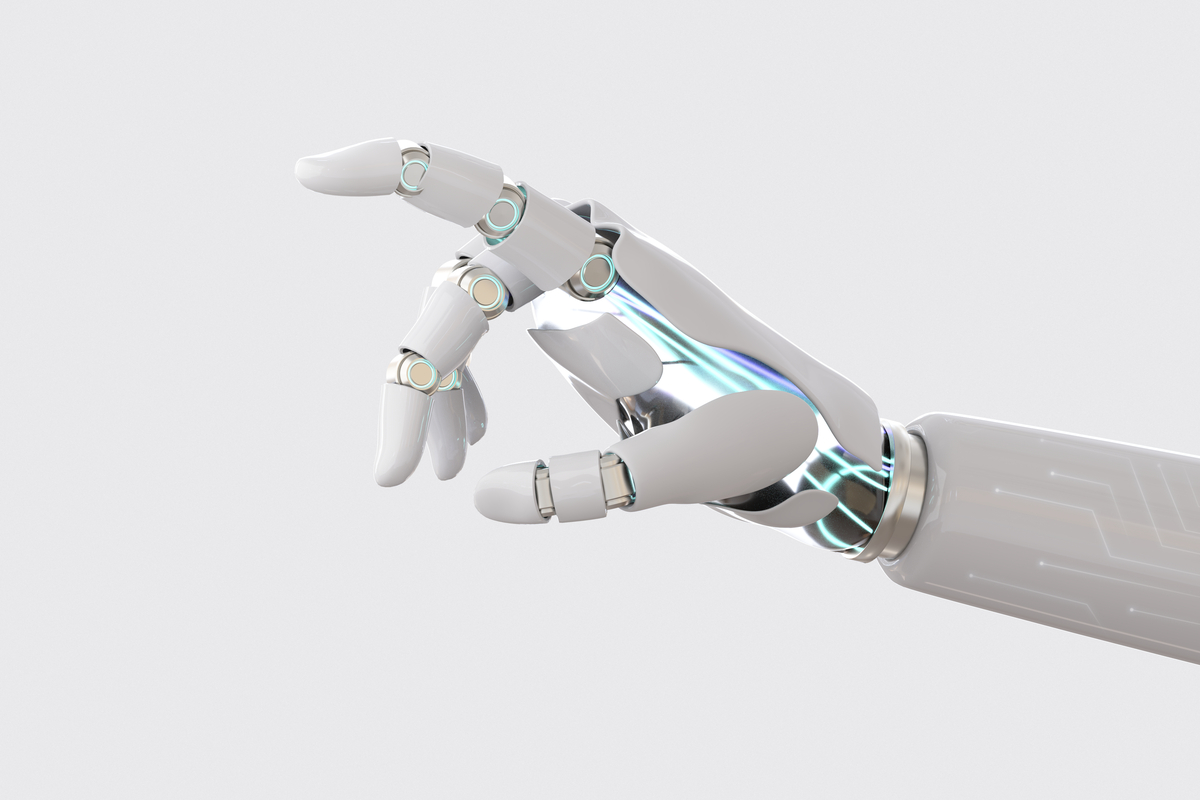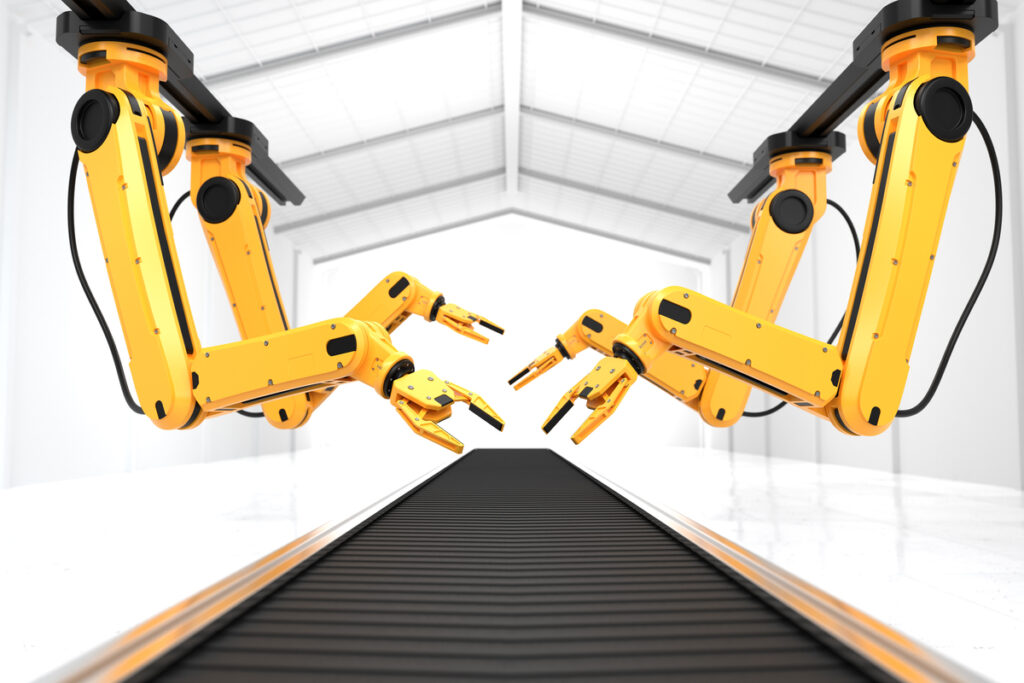Updated by Nazanin Ghodsian, 08/07/2024
Businesses are operating in a completely new way thanks to digital transformation, which also improves operations and adds substantial value for customers. Modern technologies like AI, BIM, cloud computing, and IoT can be integrated by enterprises to advance operations, enhance customer experiences, and boost productivity. This change is necessary to promote innovation and keep competitiveness.
The Fourth Industrial Revolution, or digital transformation and Industry 4.0, integrates these digital innovations into industrial processes, especially in the building and manufacturing sectors. Industry 4.0 uses robotics, artificial intelligence, and the Internet of Things to build smarter, more productive, and adaptable work environments.
The drive behind adopting digital transformation and Industry 4.0 is obvious: implementing these advancements is essential for businesses to stay ahead of rivals. Businesses can increase productivity, concentrate on client needs, and create new avenues for growth and innovation by implementing digital solutions.

The Key Drivers of Digital Transformation and Industry 4.0
Digital Transformation and Industry 4.0 are being driven by several factors, including technological advancements, changes in consumer behavior, and increased competition.
The most crucial factor is technological progress. Digital technologies such as cloud computing, Internet of Things (IoT), and Artificial Intelligence (AI) have provided companies with the ability to analyze huge amounts of information and automate industrial processes. Additionally, these technologies have made it possible for businesses to develop new products and services that were previously too expensive or unattainable.
The alterations in consumer behavior are also driving Digital Transformation and Industry 4.0. Customers expect customized experiences and companies that fail to meet these expectations are more likely to lose the market share. Digital technologies are making it possible for companies to collect information about their customer’s preferences and behaviors and use that data to provide more customized products and services.
Increased competition is another driver. Companies that fail to embrace digital technologies risk falling behind their competitors, losing market share, and ultimately going out of business. Digital technologies enable companies to operate more efficiently, reduce costs, and improve the quality of their products and services, giving them a competitive advantage.
What are the Benefits of Digital Transformation and Industry 4.0?
The benefits of Digital Transformation and Industry 4.0 are numerous and can have a significant impact on businesses that embrace them. One of the most significant benefits of Digital Transformation is improved efficiency. By automating routine tasks and streamlining processes, businesses can reduce labor costs, increase productivity, and accelerate time-to-market. This can lead to increased profitability and competitive advantage.
Another benefit is enhanced customer experience. By leveraging digital solutions, businesses can provide personalized and seamless experiences to their customers across multiple channels. This can lead to improved customer satisfaction, loyalty, and retention.

Digital Transformation also provides businesses with data-driven insights that can help them make informed decisions and improve their operations. With Industry 4.0 technologies such as the Internet of Things (IoT) and AI in construction, businesses can gain real-time data insights that can optimize their processes and improve their overall performance.
Cost saving is another benefit: by automating processes, optimizing operations, and improving supply chain management in construction, businesses can reduce costs and increase profitability.
Finally, Digital Transformation can improve sustainability by optimizing energy consumption, reducing waste, and improving supply chain transparency. This can lead to a more sustainable and environmentally friendly business operation.
The Challenges of Implementing Digital Transformation and Industry 4.0
Skanska, established in 1887, is a global construction and development company located in Sweden. As one of the biggest building companies worldwide, Skanska operates in different sectors of the construction industry, such as architectural construction, structural engineering, and infrastructure development.
The company places a significant emphasis on sustainability, with a strong dedication to reducing its environmental effect and engaging with local communities. Skanska has participated in numerous large-scale and important building projects across the world, such as the transportation hub of the World Trade Center in New York City and the redevelopment of Battersea Power Station in London.
This company has applied Digital Transformation throughout many of its undertakings, but one of the most significant is the Karlatornet venture in Gothenburg, Sweden. Skanska utilized Building Information Modeling (BIM) technology to produce a digital model of the project, which was shared with all stakeholders, including architects, engineers, and contractors. The digital model allowed Skanska to refine the construction process, reducing mistakes and enhancing efficiency. The project also employed 3D scanning technology to manage the development and pinpoint possible complications instantly, enabling quicker and more accurate decision-making.
Strong leadership, embracing innovation, investing in technology, a collaborative approach, and investing in training, are the most significant factors that contributed to Skanska’s success in Digital Transformation and allowed the company to remain competitive in an industry that is rapidly changing and evolving.
How to Prepare for Digital Transformation and Industry 4.0?
Digital Transformation and Industry 4.0 are buzzwords that are constantly thrown around in the business world. However, implementing these trends is no small feat. To prepare themselves, businesses need to take a strategic approach that considers several factors.
First, businesses should start by developing a clear understanding of what these trends mean for their organization. This includes researching the latest trends and best practices and identifying how they can help achieve business goals. Once the business has a clear understanding of what Digital Transformation and Industry 4.0 entail, they should assess their current infrastructure, talent pool, and organizational culture. This will help them identify any weaknesses or gaps that could hinder successful implementation.
Next, businesses should identify the areas that could have the greatest impact. This could include areas such as customer experience, supply chain management, or product development. By developing a roadmap that leverages these trends, businesses can ensure that they are implementing them in the most effective way possible.

Investing in the right technologies and talent is also crucial for successful implementation of Digital Transformation and Industry 4.0. This may include hardware and software that support automation, analytics, and other key digital technologies. It also involves hiring and training employees with expertise in areas such as data science, artificial intelligence, and cybersecurity.
Creating a culture of innovation and change is another essential step. Leaders must communicate the benefits of these trends and work to create a culture that is open to change and innovation. This may involve redefining company values, investing in employee training, and implementing agile methodologies.
Finally, businesses must stay up-to-date with the latest trends and best practices in Digital Transformation and Industry 4.0. This means attending conferences and industry events, reading relevant publications, and engaging with thought leaders in the field.
Future of Digital Transformation and Industry 4.0
This system is exciting and full of possibilities. As technology continues to evolve at a breakneck pace, businesses that are prepared to embrace these trends will be well-positioned for success.
One key trend that is likely to shape the future of Digital Transformation and Industry 4.0 is the increased use of artificial intelligence (AI) and machine learning. These technologies are already being used to automate routine tasks, improve decision-making, and enhance customer experiences. In the future, we can expect to see even more sophisticated AI applications that have the potential to revolutionize industries ranging from healthcare to finance.
Another important trend is the continued growth of the Internet of Things (IoT). The IoT has already enabled businesses to gather vast amounts of data from connected devices, and this trend is only set to continue. As more and more devices become connected, businesses will have even more data to work with, enabling them to make more informed decisions and create more personalized experiences for customers.
Blockchain technology is another trend that has the potential to transform industries ranging from finance to supply chain management. Blockchain enables secure, transparent, and tamper-proof transactions, making it an attractive option for businesses that need to manage complex supply chains or facilitate secure transactions.
Overall, the future of Digital Transformation and Industry 4.0 is bright. Businesses that are prepared to embrace these trends and leverage them to their advantage will be well-positioned for success in a rapidly evolving digital landscape. However, it’s important to note that Digital Transformation is an ongoing process that requires ongoing investment and adaptation. Businesses that are willing to invest in the necessary infrastructure, talent, and culture will be well-positioned to thrive in the digital economy of the future.

Case Studies
In recent years, many businesses have successfully implemented Digital Transformation and Industry 4.0 technologies, resulting in significant benefits. Here are a few examples:
1. General Electric (GE) Aviation
The company implemented a digital twin platform that uses IoT data and machine learning algorithms to optimize its operations. The platform enables GE Aviation to predict maintenance needs, optimize engine performance, and improve safety. As a result, GE Aviation has achieved significant cost savings and improved the efficiency of its operations.
2. Bosch
which implemented a smart factory that uses IoT sensors and real-time data analytics to optimize its production processes. The factory has enabled Bosch to reduce downtime, increase efficiency, and improve product quality. By leveraging these technologies, Bosch has been able to remain competitive in a rapidly changing marketplace.
3. Walmart
Another example of a business that has successfully implemented Digital Transformation initiatives. Walmart has utilized AI-powered chatbots to assist customers and IoT sensors to monitor inventory levels. These initiatives have helped Walmart improve the customer experience and optimize its supply chain. As a result, Walmart has been able to remain at the forefront of the retail industry.
4. Siemens
Has embraced Industry 4.0 technologies too, including robotics, IoT, and AI, to optimize its production processes. By using these technologies, Siemens has been able to increase efficiency, reduce costs, and improve product quality. The company has also been able to develop new products and services that are tailored to the needs of its customers.
5. Royal Dutch Shell
Has implemented a digital twin platform that uses IoT data and machine learning algorithms to optimize its oil and gas operations. This has enabled the company to reduce downtime, improve safety, and increase production efficiency. By embracing these technologies, Royal Dutch Shell has been able to remain competitive in a rapidly changing energy landscape.
These examples illustrate the potential benefits of Digital Transformation and Industry 4.0. By leveraging these technologies, businesses can improve efficiency, reduce costs, and enhance the customer experience. However, successful implementation requires a strategic approach that considers factors such as infrastructure, talent, culture, and strategy. By taking a holistic approach, businesses can position themselves for success in a rapidly evolving digital landscape.
Conclusion
In conclusion, Digital Transformation and Industry 4.0 are essential for business success in today’s fast-paced and competitive marketplace. By leveraging these technologies, businesses can improve efficiency, reduce costs, and enhance the customer experience. Moreover, this system enables businesses to innovate and develop new products and services that are tailored to the needs of their customers.
As we have seen in the case studies, successful implementation requires a strategic approach that considers factors such as infrastructure, talent, culture, and strategy. However, the benefits are clear, and businesses that fail to embrace these technologies risk falling behind their competitors.
Therefore, it is essential for businesses to invest in Digital Transformation and Industry 4.0 technologies and develop a culture of innovation and continuous improvement. By doing so, businesses can position themselves for success and thrive in a rapidly evolving digital landscape.
FAQs
What is Digital Transformation?
- Answer: Digital Transformation integrates digital technologies into business processes to enhance operations and customer value, using AI, IoT, and cloud computing.
What is Industry 4.0?
- Answer: Industry 4.0 involves applying digital technologies like AI and robotics to industrial processes for smarter, more efficient manufacturing and construction.
What drives Digital Transformation and Industry 4.0?
- Answer: Key drivers include technological advancements, changing consumer behavior, and increased competition.
Suggested article for reading:
The Role of Digital Factory in Industry 4.0
Lean Construction Principles and Practical Examples
Top 7 Sustainable Architecture Projects
Resources:
IBM | TWI Global
For all the pictures: Freepik





